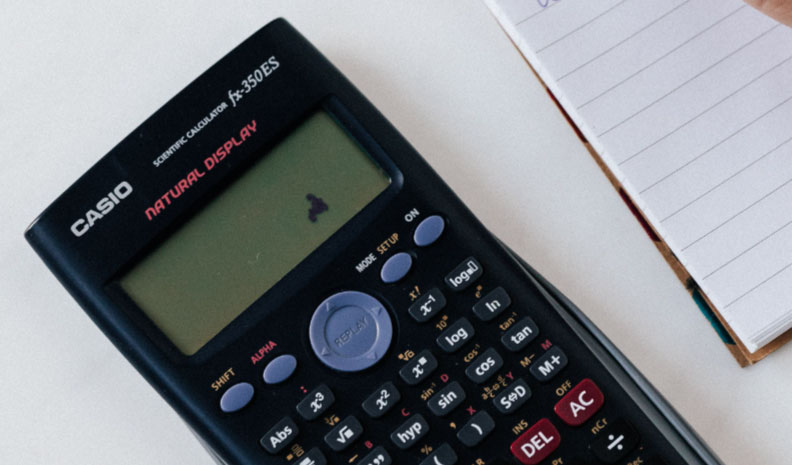In the study of mathematics, understanding the domain and range of a function is akin to mapping a journey through the universe of numbers.
The domain marks the starting points, the set of all possible inputs we can feed into our mathematical machine.
The range, on the other hand, is the destination, revealing the outcomes that emerge from our inputs.
As navigators of numerical landscapes, we seek to grasp these concepts not through complex jargon but with simple, intuitive comprehension.
This exploration will guide you through the essential steps to identify and harness the domain and range of functions, enhancing your mathematical toolkit.
By demystifying these terms, we lay the groundwork for deeper discovery in mathematics, inviting you to unlock the potential held within the power of domain and range.
Fundamental Concepts of Functions
To fully harness the analytical capabilities of mathematics, one must grasp the fundamental concepts of functions, which serve as the building blocks for understanding domain and range.
Functions are like machines – you feed them an input, and they give back an output.
The domain is simply the set of all possible inputs you can feed into this machine – think of it like the variety of ingredients you can put into a blender.
The range, on the other hand, is the set of all possible outputs – it’s the different blends you can get out of the blender.

Graphing Calculator Basics
Transitioning from the theoretical underpinnings to the practical application, mastering the use of a graphing calculator is crucial for determining the domain and range of functions accurately.
Here’s how to calaculate Domain and Range:
1. Start by pressing ‘Y=’ to input your function.
2. Use ‘X’ for the variable and ensure the function is entered correctly for a precise graph.
3. Press ‘Graph’ and observe: the x-values that appear show the domain, while the y-values reveal the range. Take note of any gaps or peaks, as these affect the domain and range too.
Always verify your results by comparing them with manual calculations. This step confirms the accuracy of your graphing calculator’s output.

Plotting Functions Accurately
Accurate plotting of functions on a graphing calculator hinges upon a meticulous entry of equations and a keen analysis of the resulting visual data.
1. To do this, begin by gently tapping the ‘Y=’ button, whispering your function into the calculator with precision.
2. As you press ‘Graph,’ a picture starts to form – lines, curves, peaks, and valleys, each telling a story of the function’s soul.
3. Peek carefully at where the lines dance and where they shy away. This dance floor is your graph, and the dancers are the x and y values.
Take note: the domain is where the x-values step, and the range is the height of y’s leap.
Watch for gaps where the dancers pause – these are the whispers of values not included, helping you to understand the function’s rhythm and flow.
Domain Determination Techniques
Commonly, mathematicians employ various techniques to determine the domain of a function, such as analyzing algebraic expressions or utilizing graphical representations. To unravel the domain puzzle, one starts with a function’s formula.
Look closely – do you see a division? If there’s a denominator, we can’t let it be zero; that’s a no-go zone for real numbers.
And what about roots? If we spot a square root, the number underneath must be cheerful, never negative, to stay in the realm of real numbers.
Sometimes, functions are like stories with hidden chapters; we need to examine them to reveal the full plot – the domain.

Identifying Function Range
Determining a function’s range involves analyzing its output values to identify the possible set of results it can produce.
The range is crucial as it informs us about the extent of a function’s outputs and where they lie on the y-axis.
To comprehend this concept, consider the following steps:
- Visual Inspection: Plot the function on a graph and observe the y-values it takes. This visual approach provides an immediate sense of the function’s behavior.
- Analytical Approach: Use mathematical analysis to find the limits of the function’s outputs, considering factors like asymptotes and boundedness.
- Real-world Context: Relate the range to practical scenarios, such as the height a ball can reach, to understand the implications and applications of the function’s range.
Handling Infinite Extents
In the context of mathematical functions, handling infinite extents requires careful consideration when defining the domain and range. These concepts may seem vast, like the universe, but fear not!
Imagine the domain as a playground where x-values, your function’s inputs, can roam freely. Sometimes, this playground is boundless, extending forever in all directions. This is what we call an infinite domain.
Similarly, the range can be thought of as the heights reachable by a swing in the playground—the output values. Some swings can go endlessly high, symbolizing an infinite range. Let’s break this down in a simple table:
| Aspect | Infinite Domain | Infinite Range |
|---|---|---|
| Meaning | All x-values | All y-values |
| Symbol | (-∞, ∞) | (-∞, ∞) |
| Example | y = x | y = e^x |
Understanding infinity in domain and range is like embracing a never-ending adventure in mathematics!

Manual Verification Methods
Although graphing calculators offer a convenient means to approximate the domain and range, manual verification is essential for exact precision and understanding the underlying function’s characteristics.
Manual methods not only bolster comprehension but also ensure that we are not misled by the limitations of technology.
- Identify Discontinuities: Look for points where the function is undefined, such as division by zero or negative square roots.
- Analyze Limits: Consider the behavior of the function as inputs approach infinity or other critical points.
- Solve Inequalities: Use algebraic techniques to solve for the set of input values that make the function valid.
These steps underscore the importance of a foundational grasp of functions and encourage a hands-on approach to mathematical exploration.
Analyzing Function Behavior
Analyzing the behavior of a function provides critical insights into how its domain and range manifest in various mathematical contexts.
Picture a function as a machine. You feed it numbers, and it gives back results. The domain is like a list of ingredients you can use, while the range is the selection of dishes you can make with them.
Just as some recipes won’t work with certain ingredients, some functions don’t play nice with all numbers.
Final Thoughts
In conclusion, mastering domain and range equips learners with essential tools for understanding function behavior.
Through graphing calculators and analytical methods, one can accurately define the operational scope and output potential of functions.
This knowledge fosters a deeper appreciation of mathematical analysis and enhances problem-solving skills.
Embracing these concepts stimulates curiosity and opens new avenues for exploring the vast landscape of mathematics, reinforcing their significance in both theoretical and practical applications.
Meet Ry, “TechGuru,” a 36-year-old technology enthusiast with a deep passion for tech innovations. With extensive experience, he specializes in gaming hardware and software, and has expertise in gadgets, custom PCs, and audio.
Besides writing about tech and reviewing new products, he enjoys traveling, hiking, and photography. Committed to keeping up with the latest industry trends, he aims to guide readers in making informed tech decisions.

